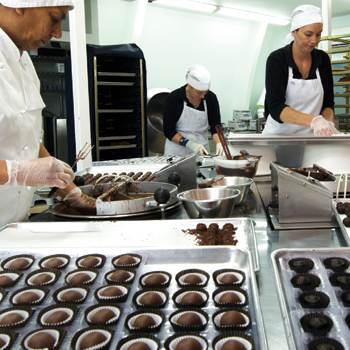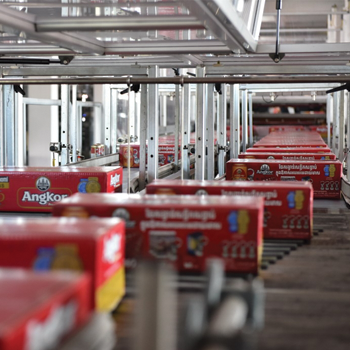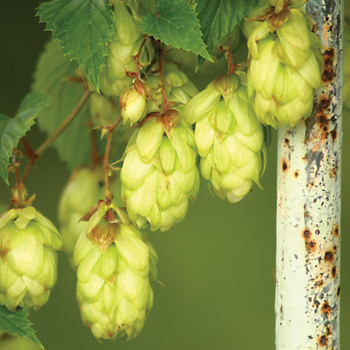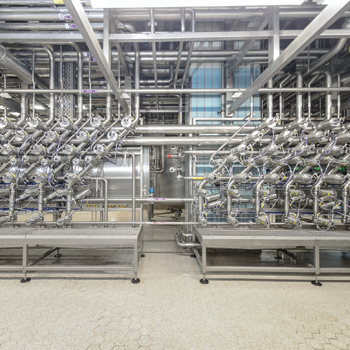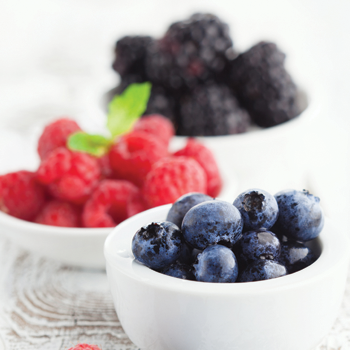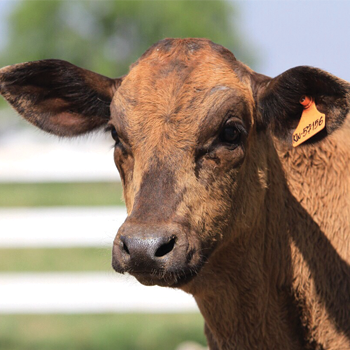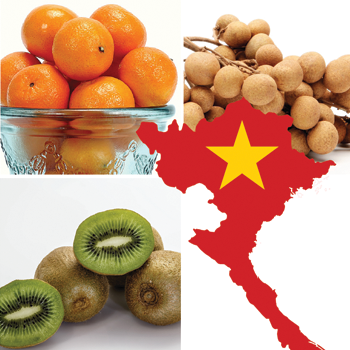ปกป้องสินค้าก่อนถึงมือผู้บริโภค
จากสถานการณ์แนวโน้มในปัจจุบันในอุตสาหกรรมการผลิตสินค้ากลุ่มเบเกอรีที่มีการเติบโตอย่างต่อเนื่อง ซึ่งส่งผลให้กำลังการผลิตสูงขึ้น ดังนั้น การเลือกใช้เครื่องจักรในกระบวนการผลิต รวมถึงการควบคุมคุณภาพจะต้องสอดคล้องกับความต้องการของผู้บริโภค หากกล่าวถึงการควบคุมคุณภาพของผลิตภัณฑ์แล้ว เครื่องตรวจจับโลหะในกระบวนการผลิต ถือส่วนหนึ่งที่ช่วยสร้างความมั่นใจในเรื่องความปลอดภัยของผลิตภัณฑ์ได้เป็นอย่างดี
การ Reject สินค้าที่ดีทิ้ง เนื่องจากผลิตภัณฑ์มีความหลากหลาย
ผลิตภัณฑ์กลุ่มเบเกอรีนั้น นับว่าเป็นผลิตภัณฑ์ที่มีความหลากหลายสูง และเหตุนี้เองหากเลือกประเภทเครื่องตรวจจับโลหะที่ไม่ถูกต้องจะทำให้เกิดการ Fault alarm และ Fault reject คือการตรวจจับสินค้าดี และคัดแยกสินค้าดีทิ้ง ทำให้ ผลผลิตที่ได้เสียทิ้งไปโดยใช่เหตุ รวมถึงสูญเสียเวลาของการตรวจสอบสินค้าที่ถูกคัดแยกทิ้ง และต้นทุนในการทำลายสินค้า ดังนั้น เครื่องตรวจจับโลหะที่สามารถรองรับการทำงานในสภาวะความหลากหลายของผลิตภัณฑ์ได้ดีจะช่วยทำให้กระบวนการผลิตสามารถดำเนินไปได้อย่างราบรื่น และมั่นใจได้ว่าผลิตภัณฑ์ที่ถูกผลิตออกมานั้นมีคุณภาพเป็นไปตามมาตรฐานที่กำหนดไว้ เครื่องตรวจจับโลหะรุ่นที่มีความถี่หลายความถี่ให้เลือกใช้จะช่วยให้เกิดประสิทธิภาพสูงสุดกับการผลิตเบเกอรี
เครื่องตรวจจับโลหะเสียไม่ได้ “ขนมปังที่ผลิตเสร็จแล้ว ต้องรีบนำออกขาย”
เครื่องตรวจจับโลหะถือเป็นด่านสุดท้ายเพื่อตรวจสอบคุณภาพสินค้าที่ผลิตเสร็จสิ้นสมบูรณ์แล้ว หากเครื่องตรวจจับโลหะ เสีย หรือหยุดกะทันหัน นั่นหมายถึง เบเกอรีที่ผลิตเสร็จแล้วทั้งหมดต้องหยุดรอการซ่อมเครื่อง ไม่สามารถนำออกขายได้ และอายุของเบเกอรีเหล่านั้นจะลดลง หรืออาจต้องเสียทิ้งไป ซึ่งถือเป็นความเสียหายทางกระบวนการผลิตที่มหาศาล
เครื่องตรวจจับโลหะรุ่นที่สามารถตรวจสอบสภาพความสมบูรณ์ของตัวเอง บอกสภาวะการทำงานของเครื่องได้ แล้วแจ้งเตือนสภาวะการทำงานของเครื่องได้ล่วงหน้า (Condition monitoring) จะช่วยทำให้ลดระยะเวลาในการหยุดการทำงานจากความผิดปกติของเครื่องได้
From the current trend of an on-going growth in the bakery manufacturing industry, it has resulted in the higher production capacity. Therefore, selection of machines in the production process and quality control must go hand in hand with the consumer needs. Once the product quality control is mentioned, metal detector in the production process is considered as a part that helps to create product safety confidence.
Rejecting Quality Product Due to Product Varieties
Bakery product is considered as a high variety product. As its variety nature is a main reason, improper selection of metal detector can cause fault alarm and fault rejection. Detecting and rejecting good quality product will result in an unreasonable waste, losing time in checking product as the good product will be screening out anyway and the cost in clearing those wastes. Therefore, metal detector, which can response well in the different product variety circumstances can facilitate smooth production process and ensure that the final product has met qualified standard. A metal detector with various choices of frequency functions will help to ensure the most effective bakery production.
Metal Detector Cannot Be Malfunctioned or Breakdown “Once the bread is ready, it must be immediately on the shelf“
Because metal detector is considered as the last quality checkpoint, once the final product is ready, if metal detector has broken or stopped working at once, that means all the fresh bakery products are delayed to be on shelves for repairing process. Then, the bakery shelf life will be shortening or even ended as waste and that considers as an enormous loss in the production process.
